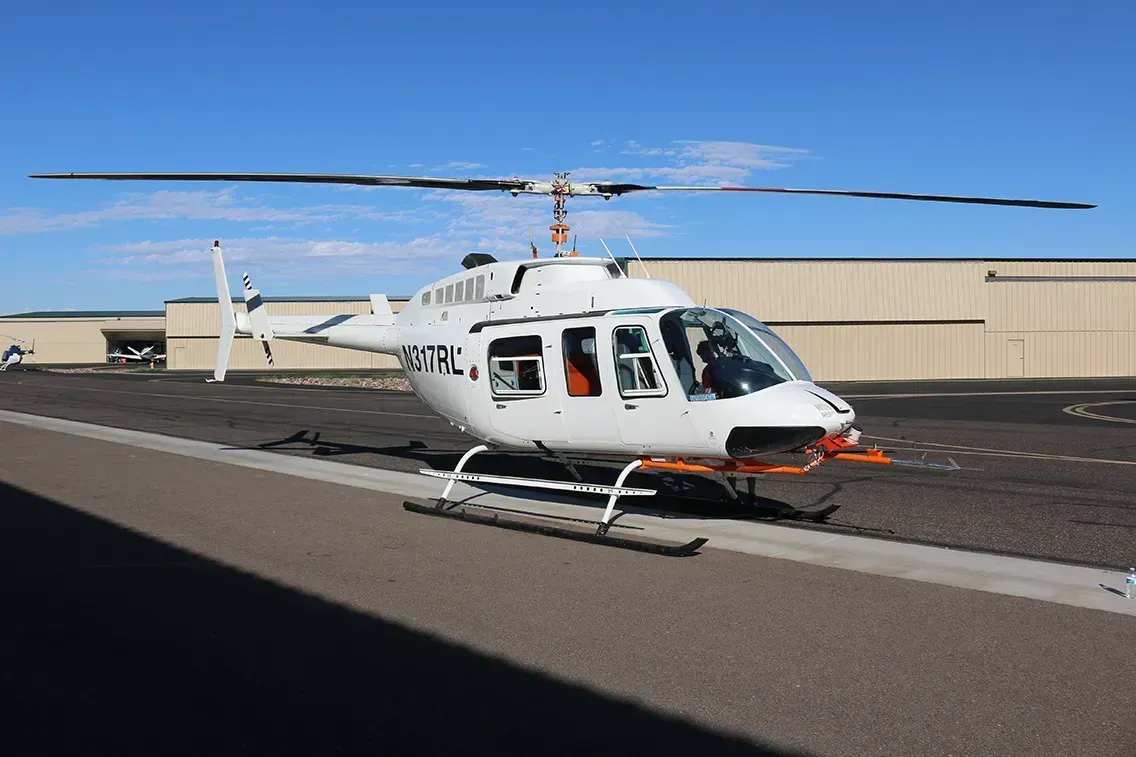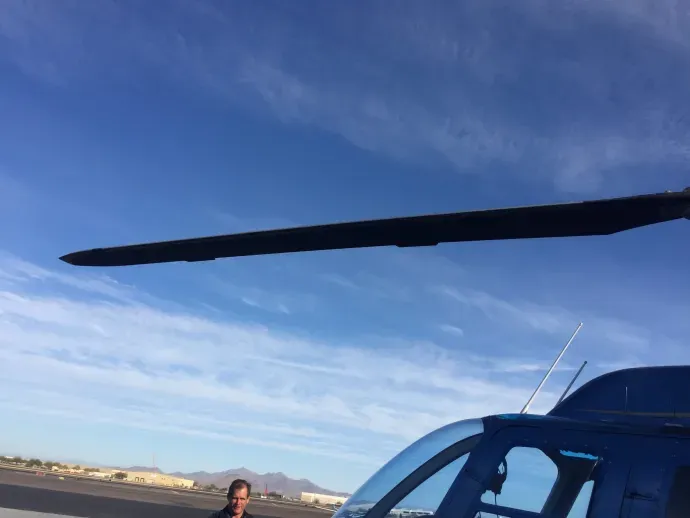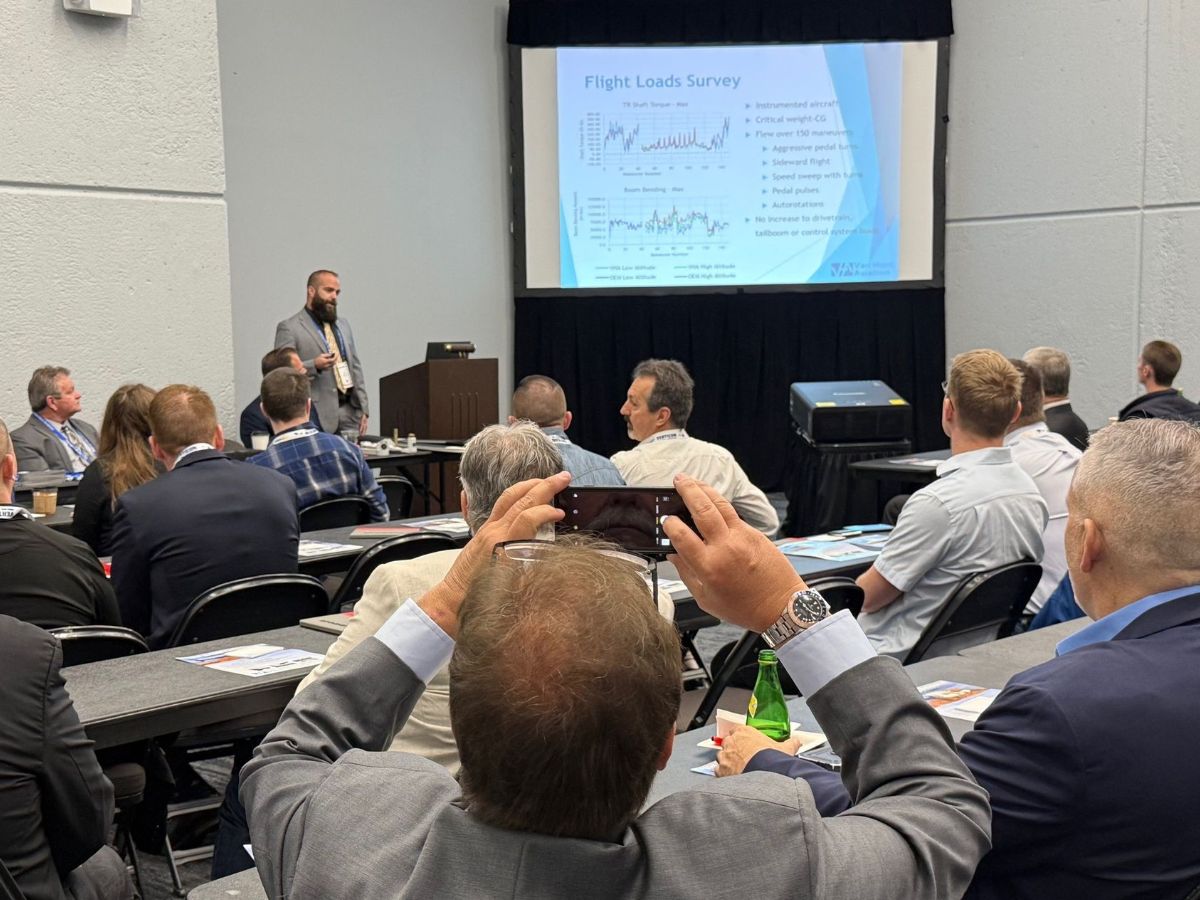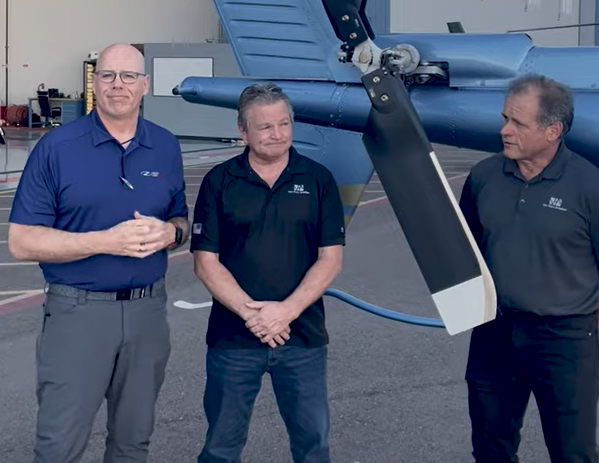Many customers have asked about the differences between our original 206B JetRanger main rotor blades (Part Number 20631000-101) and our 206B Version 2 blades Part Number 20635000-501) This post explains the differences and provides some history and context to the changes.
Summary of Main Improvements
The 206B Version 2 main rotor blades incorporate the following changes and improvements over the Version 1 blades:
- Changes to carbon fiber ply count and orientation to reduce blade stiffness and improve ride quality
- Changes to the mass distribution to make composites “feel” more like the metal blades
- Dual trim tabs for track and balance
- Removal of overhaul requirement while still doubling the service life compared to metal blades
- Reduction in list price by more than $15,000 per blade
In addition, VHA composite rotor blades in general offer the following improvements over metal blades:
- Better performance
- 2-5 knots faster, especially when both VHA mains and tails used on same ship
- ncreased lift capability (see 206L tail rotor blade FMS
changes)
- Increased responsiveness/authority
- Corrosion resistance
- Quieter (especially applies to tail rotor blades)
- Full-length abrasion strip for leading edge fidelity
- Price approximately same or less than metal blades
- Service life at least twice that of the OEM blades
History of the 206B Version 2 Main Rotor Blades
VHA received FAA certification on its original 206B JetRanger main rotor blade design (Part Number 20631000-101) in 2016. It was the first iteration of a composite main rotor blade that VHA took all the way through the certification process, and we were proud of the achievement (and still are).
We flew the Version 1 blades on our own JetRangers before and after certification. They flew well, albeit with a slightly different feel than the metal blades they replace. They had a bit of a stiffer ride, but provided excellent control authority. We performed autorotations to the ground with them—many, many times—with no issues. We had several pilots and potential customers fly them, mostly noting how they responded quicker to control inputs and “bit more air,” resulting in better performance.
After 206B main blade certification, we started working on the 206L LongRanger main rotor blades. The plan was to merely “stretch” our composite JetRanger blade by 22 inches. Meanwhile, we were selling the 206B JetRanger main rotor blades and listening to customers, many of whom were surprised when our composite main rotor blades didn’t fly or feel exactly the same as the metal rotor blades. We had known the blades would not perform identically, given the different materials and high-performance laminar flow airfoil, so we began including a READ ME FIRST
document to prepare operators for the differences.
Given the customer feedback, we changed gears on the approach to the LongRanger main rotor blade design and decided to try to match the feel of the metal blades, while still retaining the improved airfoil and materials. This was accomplished by adding spar ply drop-offs, adjusting the root doubler ply orientation, reducing the skin plies, and changing the weight distribution of the blade. The design changes accomplished the desired effect of emulating a “softer” ride similar to the metal blades, and the blades were ready for certification. As a bonus, improved testing methods allowed us to increase the interval between overhauls from 2800 hours on the 206B mains to 4000 hours on the 206L mains.
The 206L main rotor blades (Part Number 20633000-101) received FAA certification in 2018. Now it was time to work on OH-58 main rotor blades.
But wait.
While many of our 206B customers adapted to the higher performing blades, a certain segment of the JetRanger operator group were vocally unhappy about making required piloting changes or about the slightly higher vibration through effective translational lift and at low speeds. We decided to delay the OH-58 main blade development and focus on improving the 206B JetRanger main blades.
In redesigning the 206B main blades, we incorporated many of the 206L LongRanger improvements to improve ride quality while maintaining performance. We also applied to the FAA to remove the overhaul requirement, with the result being a shorter life blade. Finally, we lowered the price of the blades by distributing the 206B Version 2 blades ourselves rather than going through Aeronautical Accessories. Although this last change increases our cost and workload, we believe it was the right thing to do to provide more value for our customers.
While in the 206B V2 certification flight test process, we suffered a tragic loss of our helicopter and crew. The NTSB report is still not out yet (as of April 27, 2021) due to delays from COVID-19, and although we had already figured out what happened shortly after the accident occurred, we are bound by agreement to not discuss what we know until the report is out. We are only allowed to say that we are confident the NTSB will not find our blades to be the cause of the accident.
While mourning for the loss of our colleagues, we regrouped and got back to the certification process. With additionally rigorous oversight by the FAA following the 737 MAX accidents and our own, and despite the difficulties in working through COVID-19, the 206B Version 2 main rotor blades (Part Number 20635000-501) received certification in August 2020.
Final Thoughts
We stand behind our 206B Version 1 (20631000-101) main rotor blades. They are fast, responsive, good flying blades. Despite some rumors to the contrary, we did NOT recall the Version 1 20631000-101 blades when we started building the Version 2 20635000-501 blades. There is no reason to. Like any new products, there have been a few nuisance issues such as abrasion strip cracks and delaminating trim tabs. None of these are safety of flight issues but have pushed us to investigate and implement improvements to the design and processing.
There are about nine dash numbers for the OEM 206B metal blades, some representing color options but others representing changes to their blades over time. Our quest for continuous improvement may also result in more dash numbers for our blades, representing a marked improvement in value to the customer.





